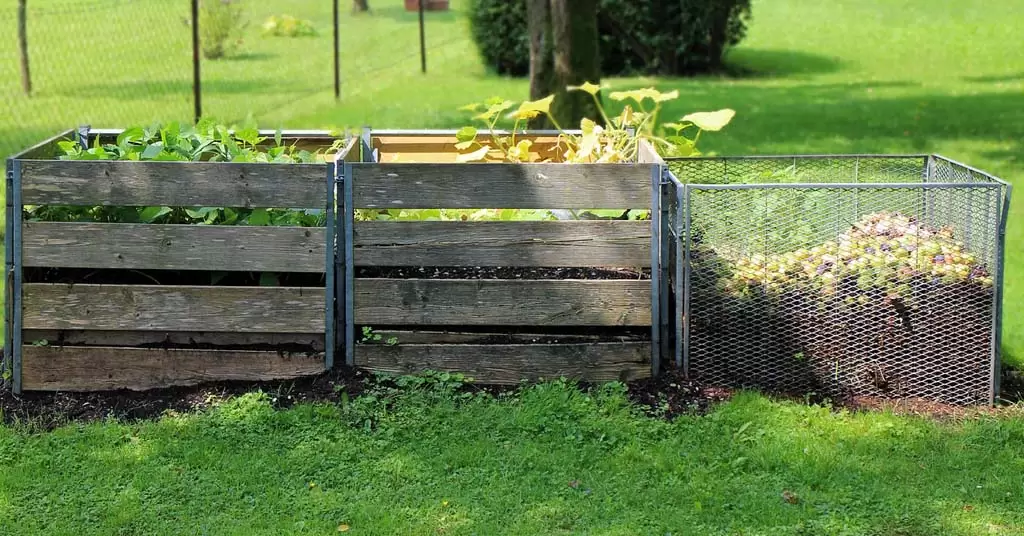At Greenuso we are eager to tell you how to make your own home compost to fertilize the soil in an ecological, natural and organic way. This will make your crops look even healthier.
If you don’t want to miss out on the details, read on!
Home Compost: Do you know what it is?
Compost is a 100% natural organic fertilizer rich in nutrients, minerals and microorganisms that you can use as soil to fertilize the plants in your garden, orchard or nursery.
Organic home composting originates from the controlled decomposition of biodegradable materials that you can produce daily at home. These include grass, dried leaves, raw fruit and vegetable leftovers, egg shells and more.
Some research has revealed that approximately 40% of household waste is organic material. Therefore, if you avoid throwing everything in the dump you can make home compost and reduce water and soil pollution.
What is home composting for?
In short, organic home compost serves to increase the nutritional properties of soils. This is possible because it provides macronutrients such as nitrogen, potassium and phosphorus.
Compost gives life to the soil and for obvious reasons provides all the nutrients needed to ensure even healthier plant growth. In fact, unlike manure, compost does not give off foul odors.
With a compost you will be able to find a useful sense to the residues of your garden, garden or kitchen. In this way, it becomes an effective alternative to reduce the level of waste and combat global pollution.
Types of organic compost
Next, we will tell you the different ways to make organic compost at home. Pay attention, as this will be your opportunity to discover what composting is best for you:
Basic organic composting
It is the easiest home compost to prepare, so you don’t have to be a specialist to do it well. You just need to pile up several layers of organic material in a container or even outdoors.
Compost in piles or containers
It’s just as simple! To conceive it, you have to stack several layers of the organic material in a container big enough. A few months later, if you guarantee optimal humidity conditions you will have your organic home compost.
Outdoor Composting
This composting can easily be done by creating a mountain of organic material in the soil. You just have to alternate between the layers of dry and wet materials to speed up the whole process. In addition, you’ll need to turn it over periodically.
Composting with coffee residues
You can also make compost from coffee grounds very easily. This is because coffee grounds decompose quickly and provide many nutritious components.
AVI-Composting
For this type of composting you should use birds such as chickens, as they accelerate the whole process of organic composting and also give eggs. However, you will have to feed them very well.

How to make home compost step by step?
There are many recipes for making compost at home, but in the end we decided on one that you can do easily and faster than you thought.
1. Prepare the compost bin
It is essential to have a well-conditioned compost bin if you want the mixture to be a success. We will explain to you better how to create your home compost bin in simple steps:
- To build it, you can recycle almost any container, wooden box or even your old large planter.
- If you decide to use a pot or a plastic box, make some little holes in the base.
- Make sure the container used is not in direct contact with the floor.
- Once your box is ready, the first layer to be added should be soil.
- The second layer should be made of dry materials such as straw, branch debris, dry leaves or sawdust.
2. Add the organic waste
The first layers of the compost should be dry, as they will prevent the bottom of your compost from rotting and damaging the mixture. Once this first step is completed, proceed to add the other organic materials:
- Now that you have more freedom to add other organic products, start with vegetable and fruit peelings, coffee grounds, eggshells; among others.
- Add different organic products or waste in layers.
- Try intercalating between wet and dry layers if you want to achieve that optimal balance that your home compost needs to be of high quality.
3. Water the compost
The humidity level of the home compost should be kept between 40 and 60% approximately. To accomplish this task conscientiously, look at what you must do:
- Water it frequently with a little water but without flooding the container.
- Make sure that the moisture penetrates all the layers you added to your compost box.
- Avoid over watering as the decomposition of organic waste generates a lot of liquid.
- Make sure your compost bin has some way of collecting excess liquids. You can do this by mixing in dry materials such as dried leaves, dried grass, sawdust or chopped up newspaper.
- Keep your compost covered to prevent it from drying out.
Finally, if you plan to make home compost from kitchen scraps and nothing else, then it will not be necessary to water it frequently, as these organic materials tend to be very humid.
Now that you know how to make your own home compost, you’re ready to start nurturing the organic crops you have at home. Are you up for it?

